Papua New Guinea
Village of Paradise
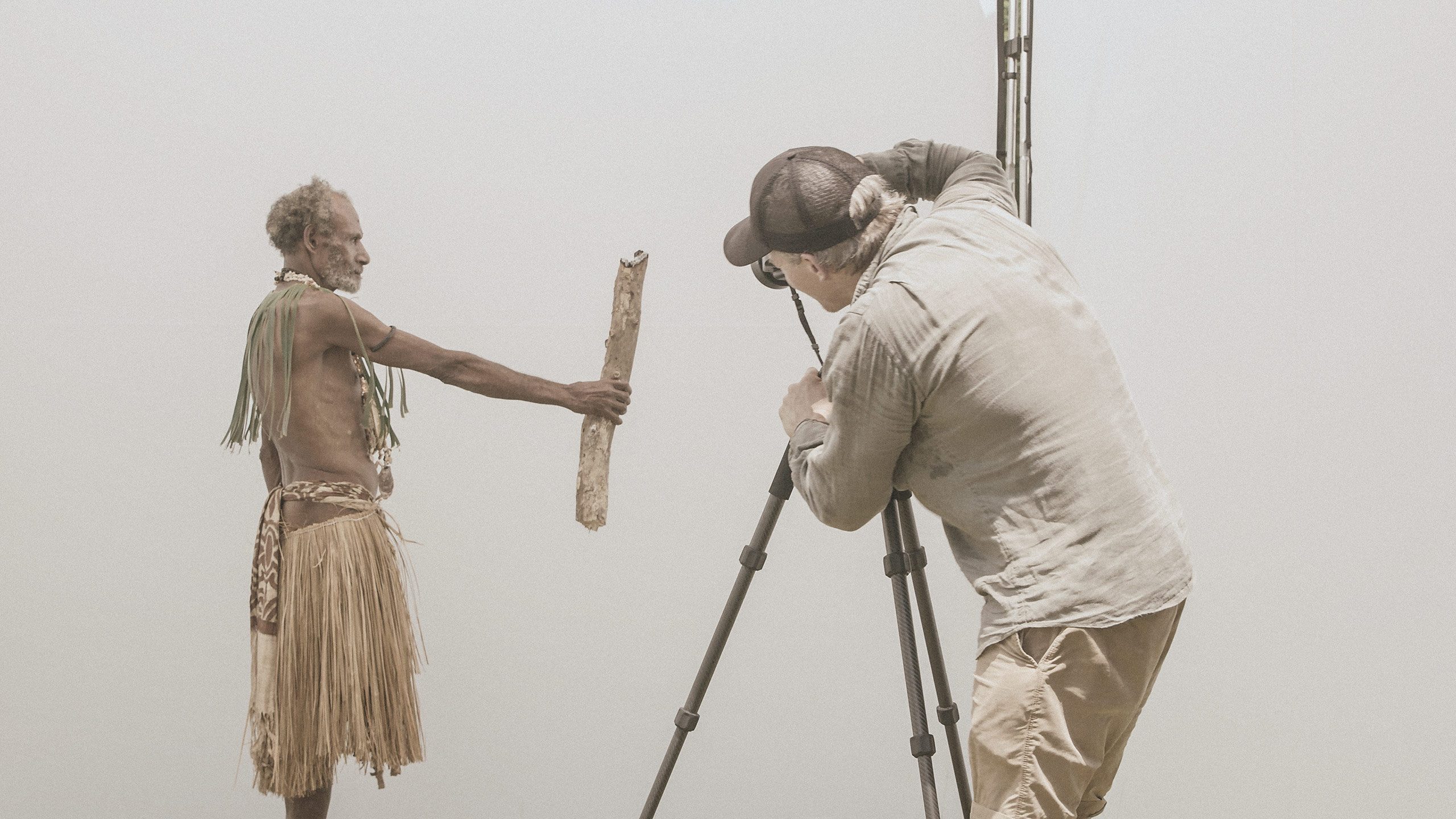
Credits
Photographer
Sam Thies
BTS Photographer
Cieran Murphy
BTS Cinematographer
Brendan Shambrook
Graphic Designer
Stephanie Antill
VILLAGE OF PARADISE
PAPUA NEW GUINEA
2018 – 2019
9°04’48.3″S 149°19’01.0″E
Village of Paradise follows an anthropological journey through the remote villages of Oro Provence, Papua New Guinea exploring the intersection of an ancient culture in a modern world through large format, photographic portraits.
We ventured along the coastline and into the jungles visiting each village with our portable studio. We captured a series of portraits with each individual subject telling a unique story. Collectively these form a series that investigates the dynamic of a modern village in PNG.
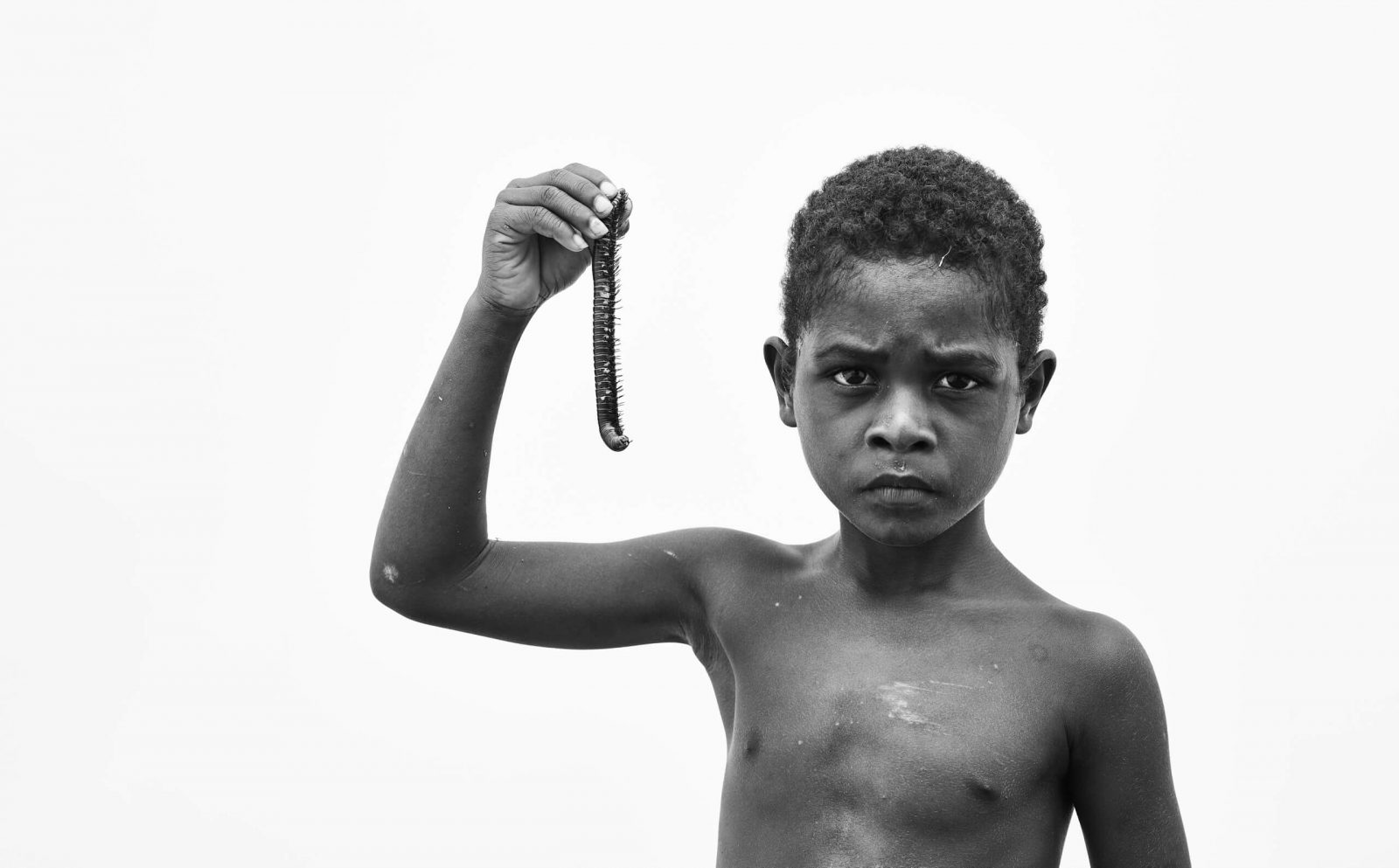
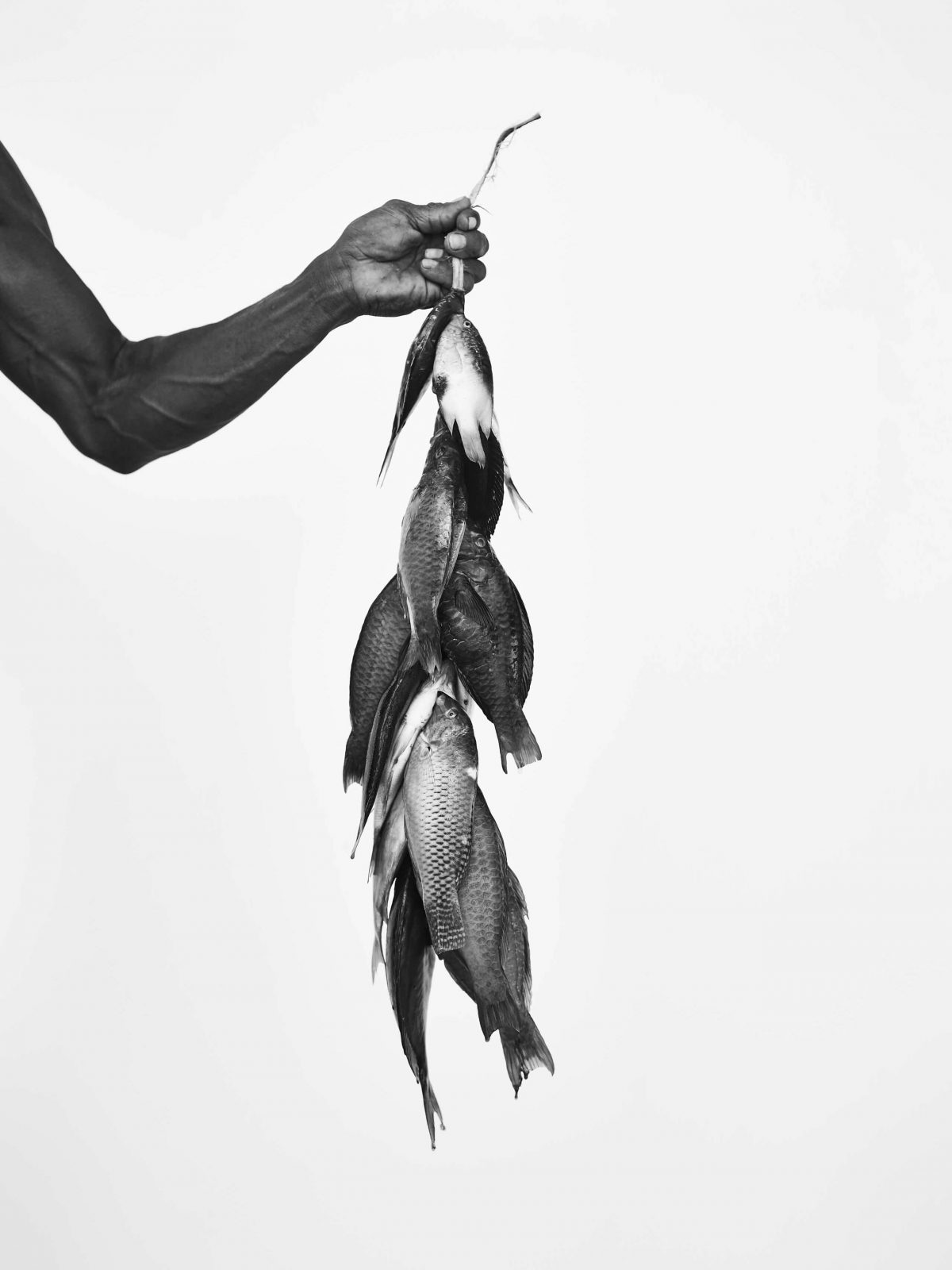
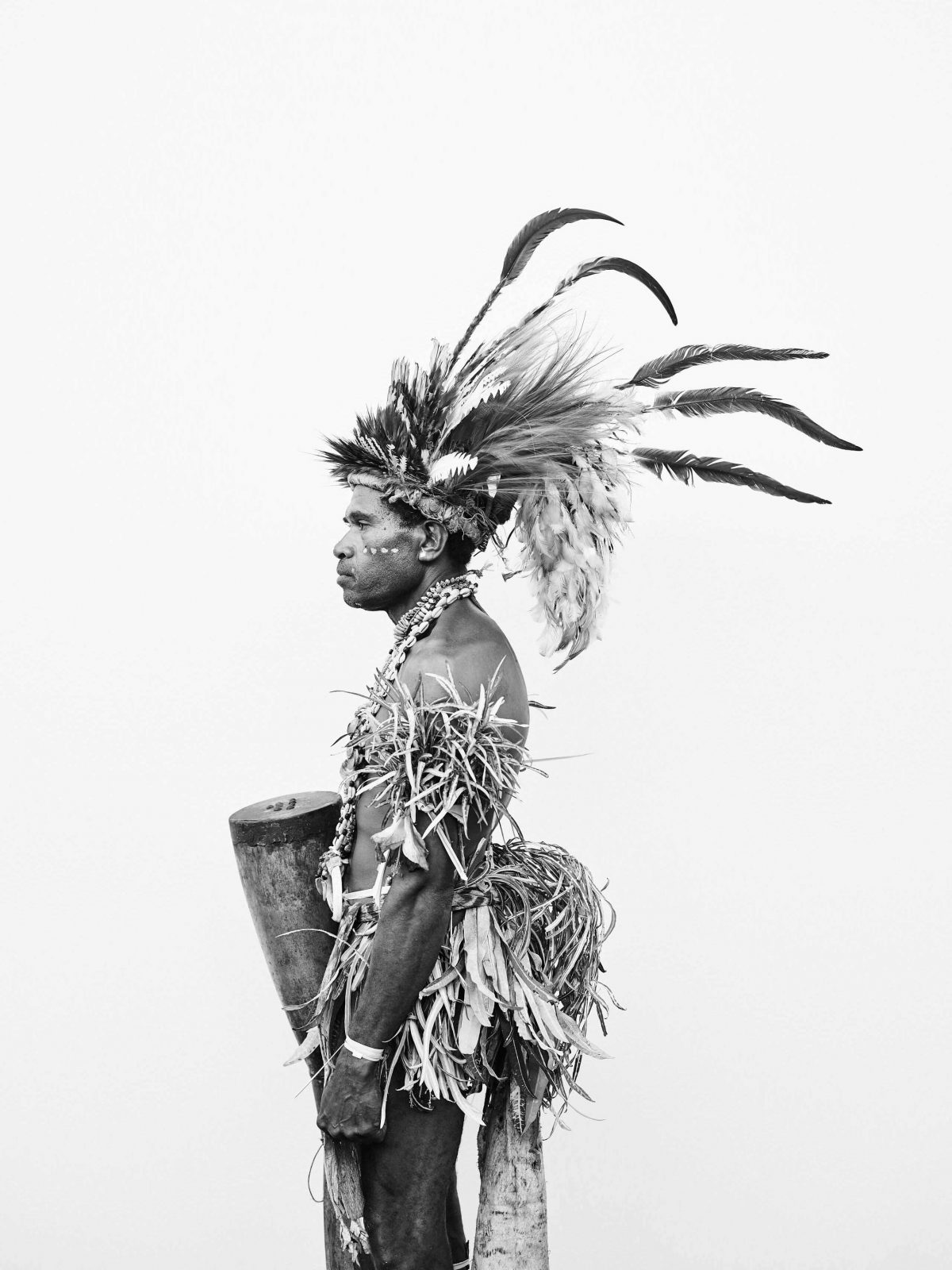
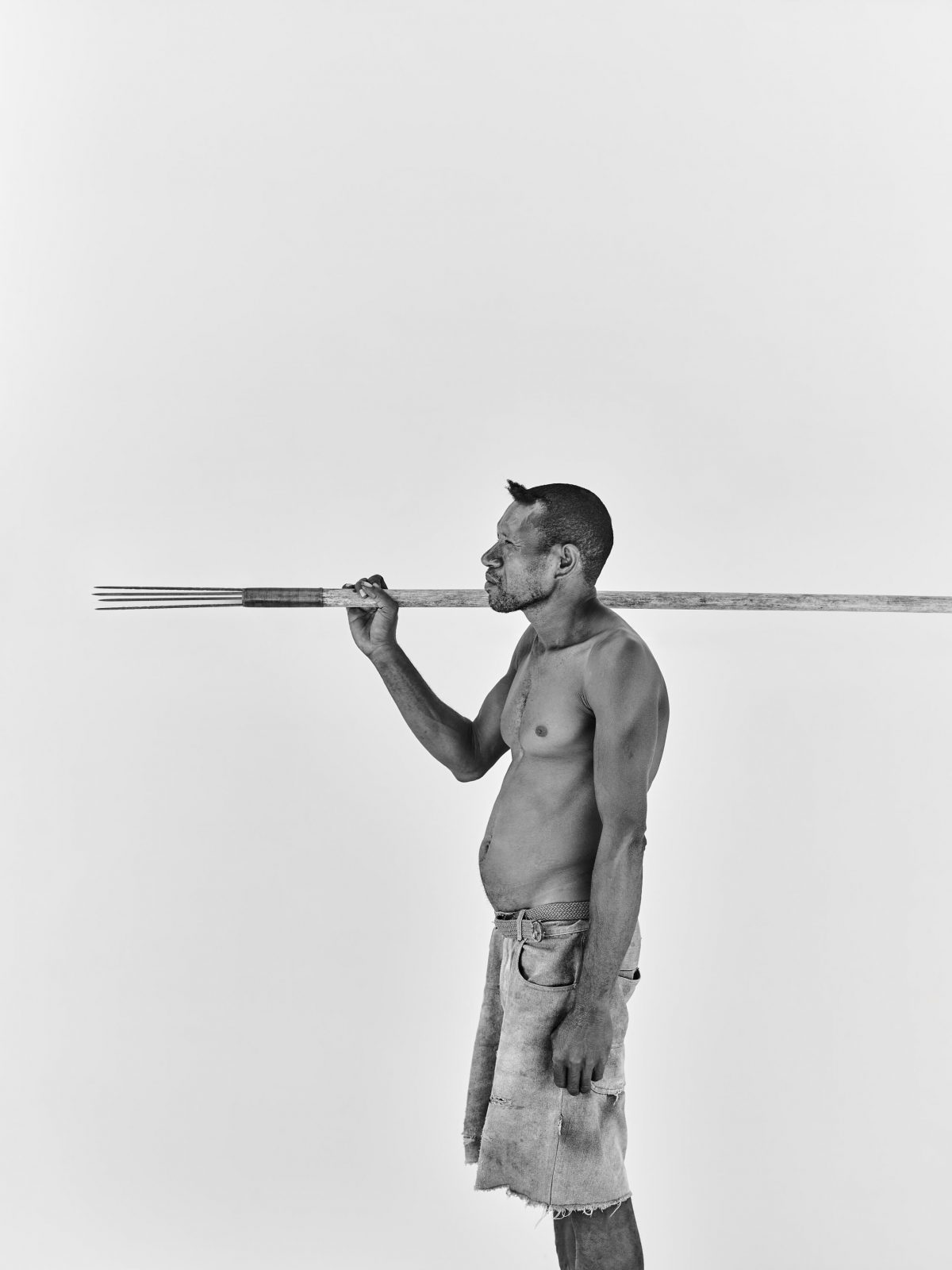
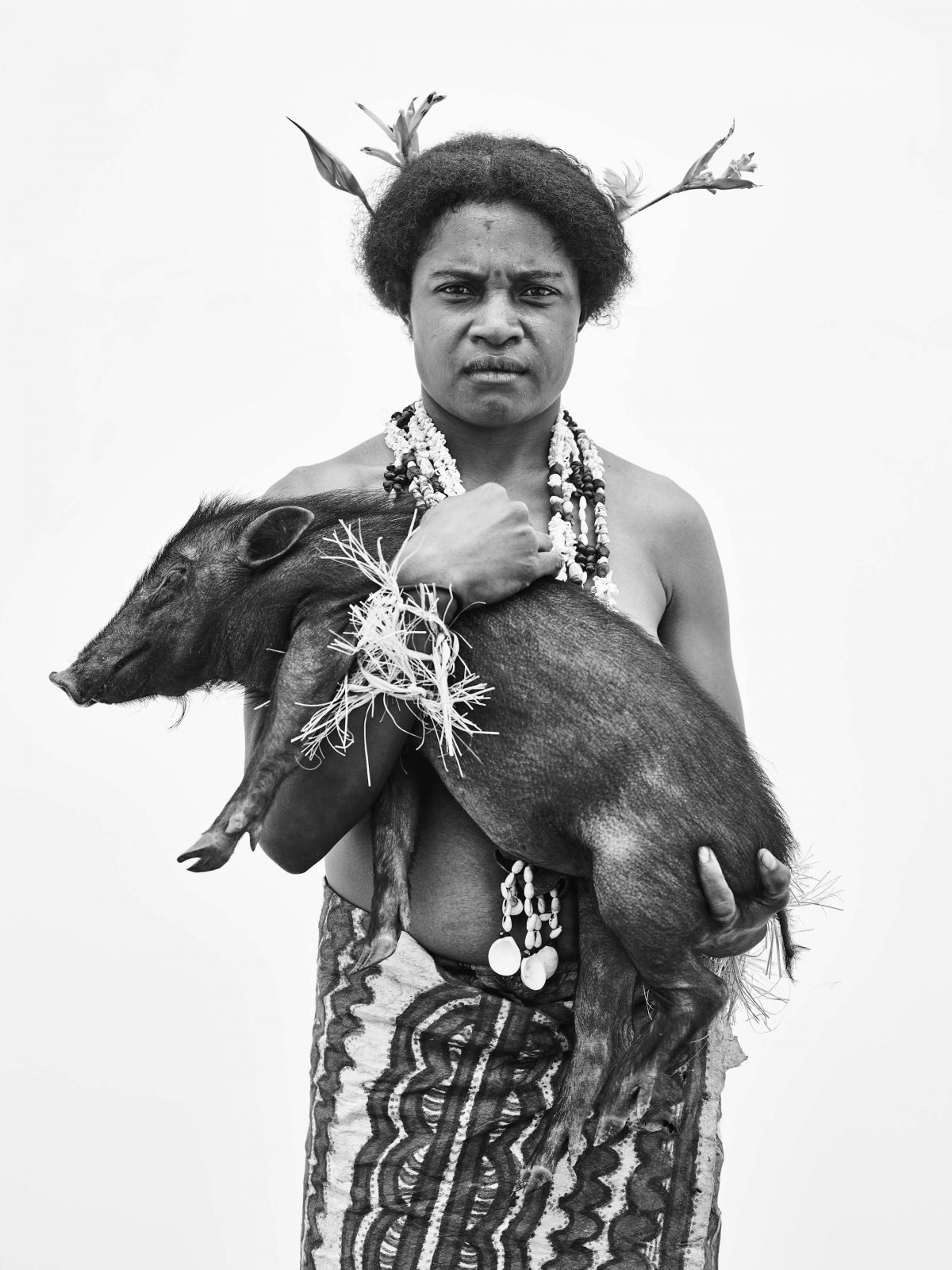
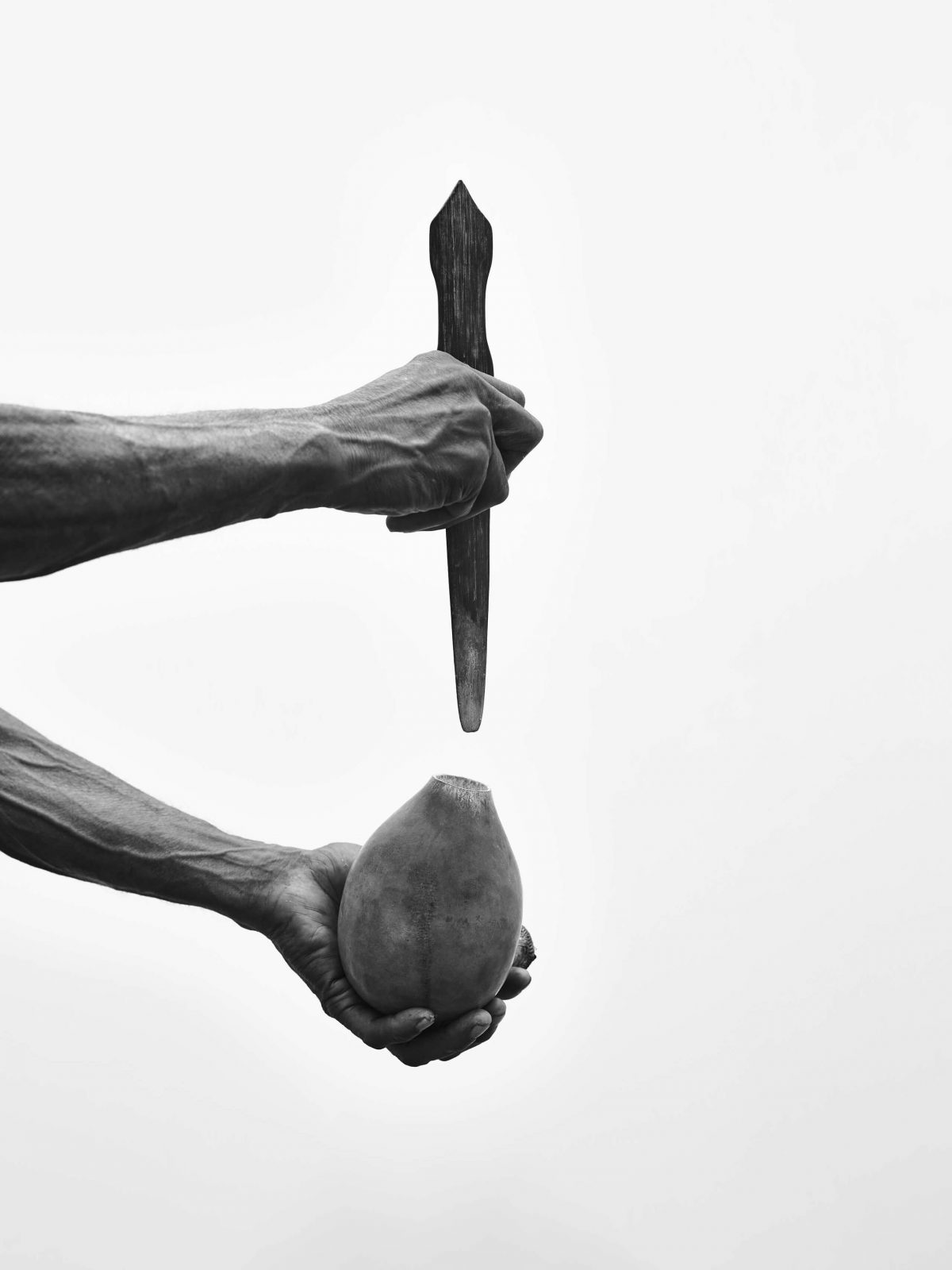
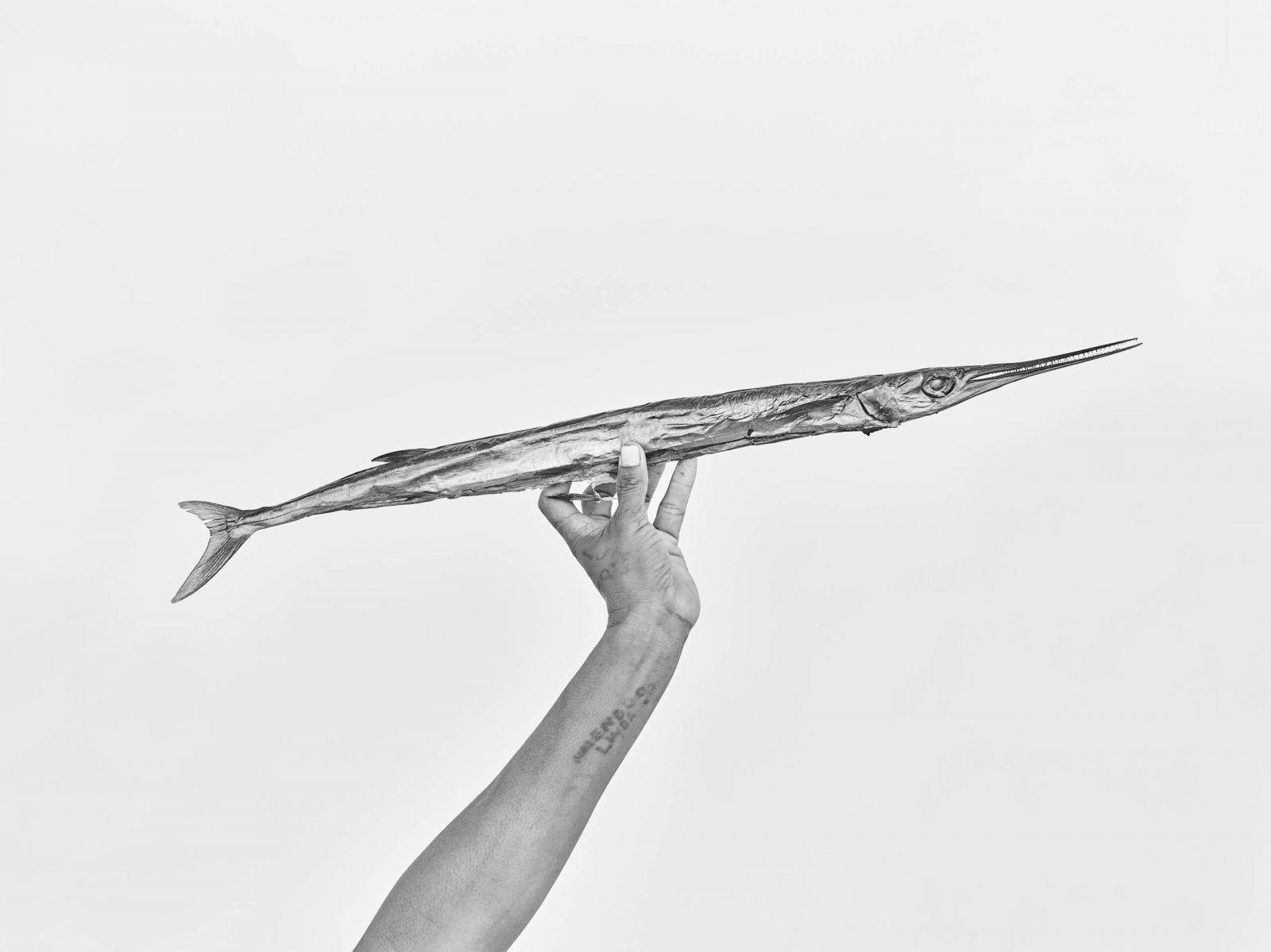
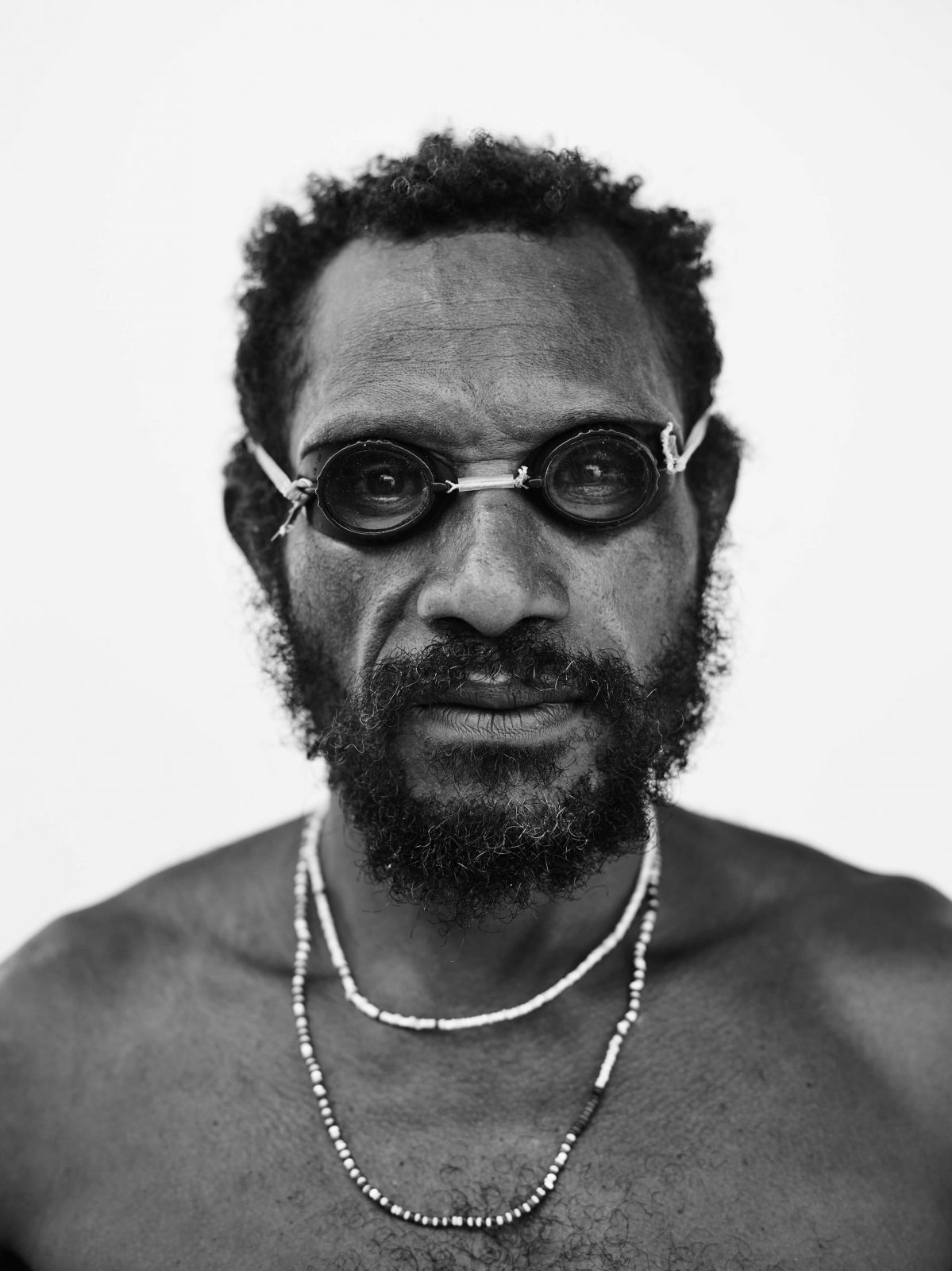
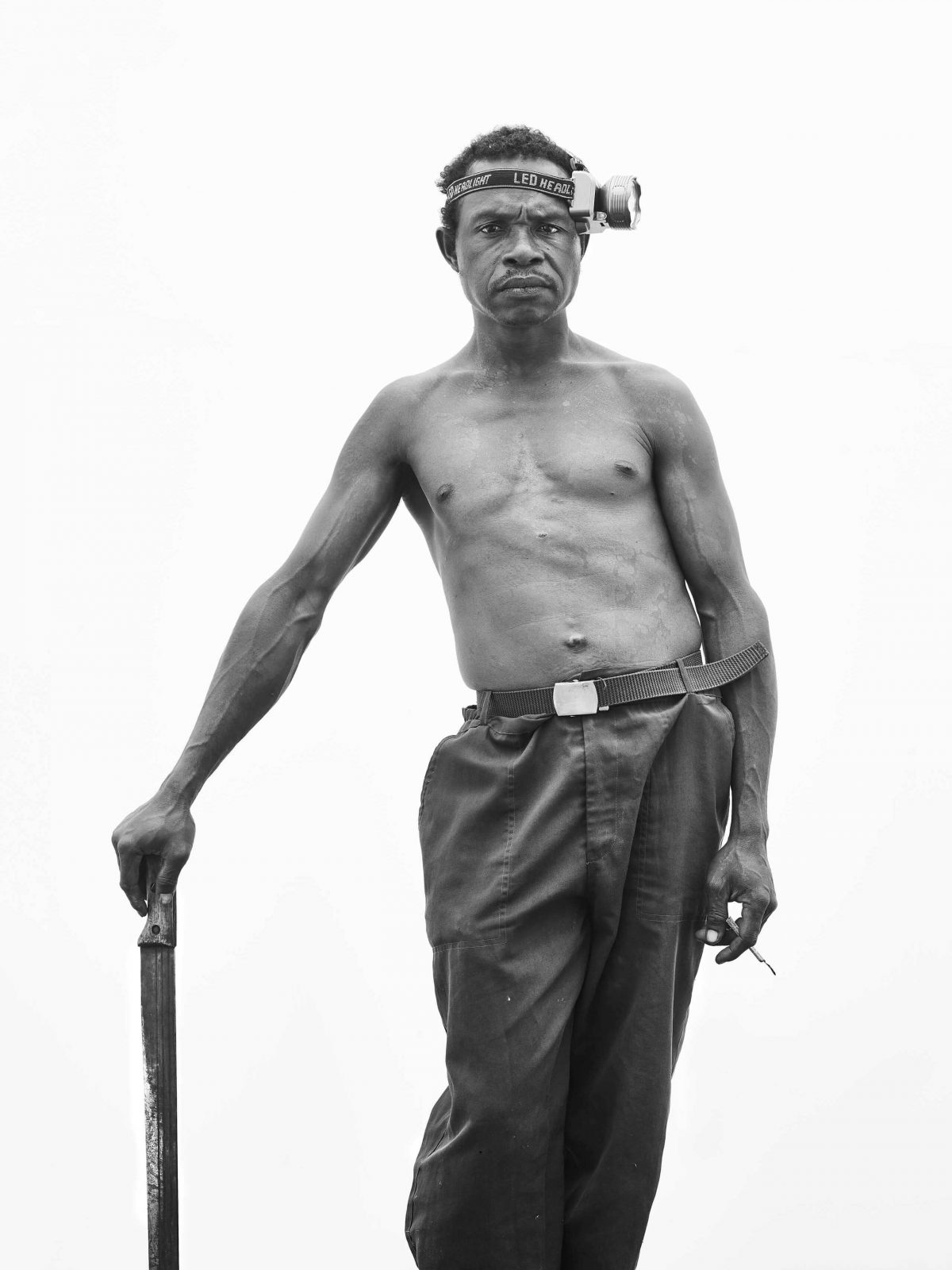
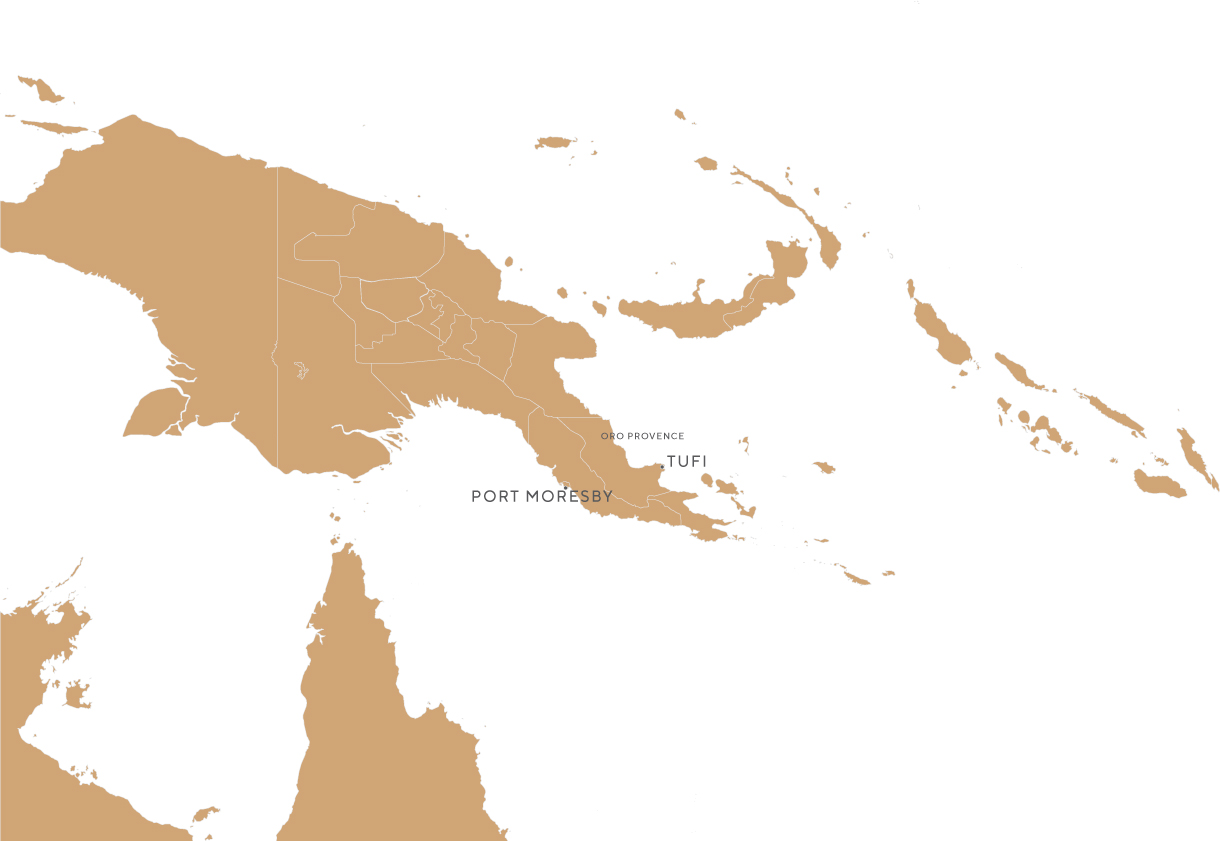
INTRODUCTION
As the captain announced our descent, I shifted my attention out the window and down to the ocean below. It was changing. From a deep blue to turquoise, and then, with the first signs of reef, clusters of lush green with rings of white and vivid aqua. We were crossing the Coral Sea. A body of water to the north of Australia. I could make out the coastal townships and as our plane flew us closer, I looked further up the rivers and deltas, across the farmlands and forests. Small villages dotted the landscape. A handful of smoke-stacks from settlements in the foothills reached into the sky. Eventually, my eyes anxiously fastened on the towering, jungle highlands of Papua New Guinea.
To me, this was the last frontier and at its closest border, sits only 150km north of the Australian coast. A place where time has shaped life unlike anywhere else. A land that is so close, yet so exotically distant. Centuries of tradition and evolution have combined to create a living museum. But at this stage something I had only read in books or seen in photographs and film. I try not to hold too many expectations when traveling to new places, so when preconceived visions started flooding in I shifted my thoughts and imagined what my grandfather may have felt on a similar flight path 75 years earlier. Like many men of his generation, going to war wasn’t about patriotism or heroics, it was simply for the adventure. To escape ordinary life and set out with your mates to experience new cultures and see new lands. For the first few weeks of his campaign, as he and his squadron established their camp around a makeshift airstrip in Port Moresby, it was just that.
Fred Thies tried to join the Royal Australian Air Force (RAAF) in the late 1930s, well before the war broke out in the Pacific. At this time, Australia, and the world were laboring through the Great Depression. Everyday life was tough and mundane. To his anguish, he was turned down on his first attempt, on the basis that he was too short. However, his mind was already made up. He wanted to experience the greater world and joining the armed forces was his only ticket. He bravely decided to have his body physically stretched to meet the minimum height required for service. The procedure didn’t give him the mandatory measurements outlined by the Air force and so his window to see the world was closing. It wasn’t until war broke out in the Pacific a couple of years later that his luck suddenly changed. Japanese troops were quickly securing new territories in the region and moving closer to Australian soil. Fred was successfully enlisted on September 22nd, 1941 and after six months of rigorous training, he was on his way to Papua New Guinea with the No. 6 Squadron.
He knew very well the lasting effects war can leave on the mind and body and was under no illusion the seriousness of what lay ahead. As a young boy, his father returned from World War I suffering debilitating shell shock and as a result, detached himself from his young family to live in isolation. This wasn’t enough to deter his thirst for adventure.
At the age of 90 Pa chose to share his stories of the war with me. During our talks, he handed me an old envelope labeled ‘Early RAAF’. The photos inside weren’t aerials of Japanese fleets or downed aircraft, they weren’t photos of mess halls, sleeping quarters or candid shots of off-duty officers. They weren’t bombing craters, fox holes or anything that resembled the fierce battle he lived through at this time. He certainly documented this too, however the ones he decided to give me were peaceful, skilfully framed images of the PNG locals and their villages. He was a keen photographer and had an eye for composition.
Over the first few weeks of his posting, in his spare time, he ventured from village to village capturing a series of portraits, armed with a Kodak Box Brownie and a willingness to learn more about his foreign neighbours. Tribesmen and women would emerge in traditional dress and perform sing sings, children would appear in more modern clothing fascinated by his camera. Young women would be harvesting crops or tending to the village pig. He observed their traditional way of life as being simple, but organised and harmonious. They had everything they needed and knew nothing of what they were missing. It was a grounding experience in his final days before heading into battle.
Years after his death in 2010 I revisited the old envelope and for some reason, the photographs were more important than ever before. Each small-format print came to life, each scene telling an ancient story. I wondered how much life had changed in these villages if at all. I wanted to find this out myself by exploring the intersection of an ancient culture in a modern world – the same quest he found himself on 75 ago.
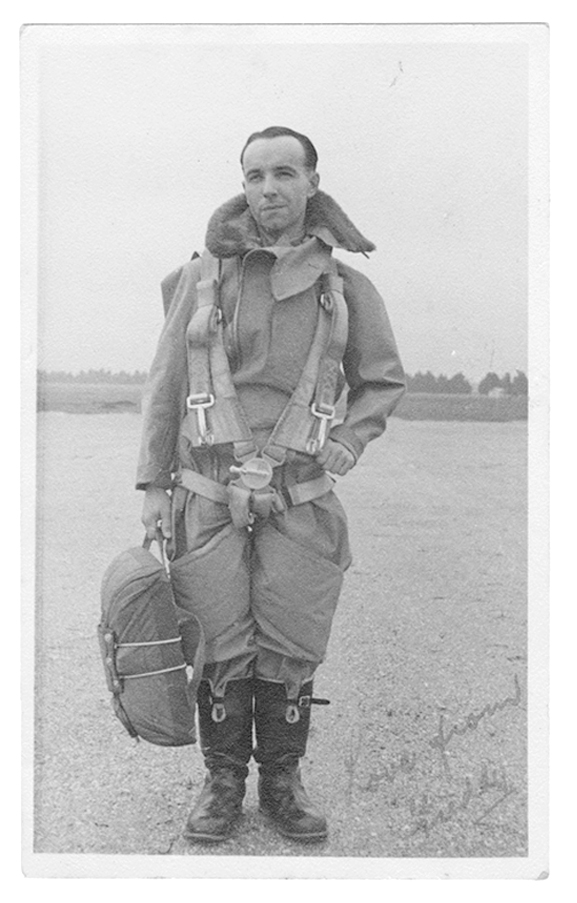
Frederick James Thies
Flight Lieutenant (401087)
RAAF 1943-1946
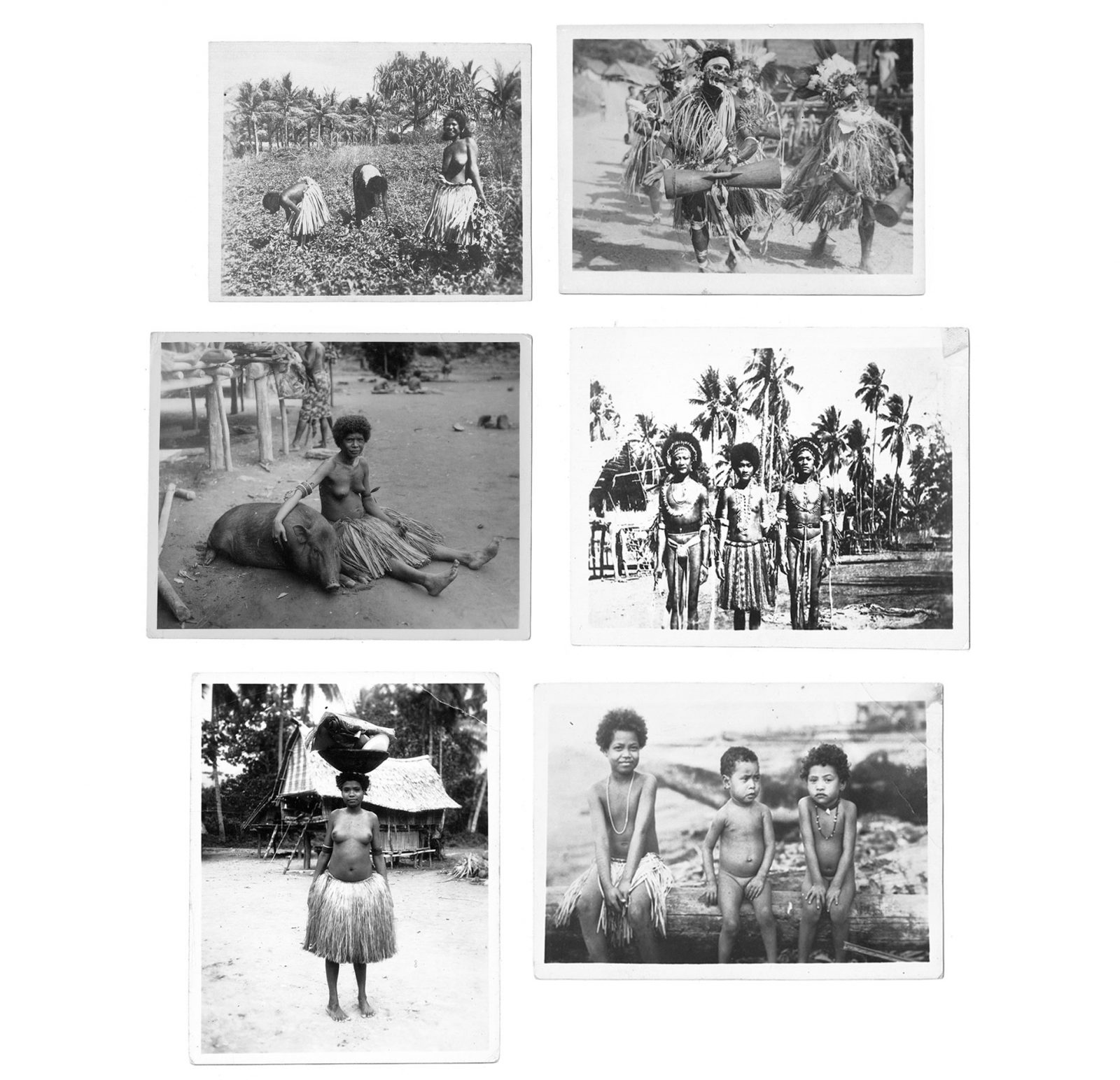
PRODUCTION JOURNAL
From Port Moresby, we boarded a smaller, twin-engine plane for a short 45-minute flight across the main island. Our carry-on camera equipment was too large for the overhead compartment and was stored up the back of the plane by some of the locals along with bags of rice and cartons of produce. We weren’t sure if we were going to see them again, but managed to calm ourselves for a nervous flight ahead.
Our flight path took us over a large mountain range towards the northern coastline to the small coastal village of Tufi. It was late spring and the wet season had well and truly arrived. Dark clouds blanketed the mountain tops and the afternoon storms rolled in from the sea. We passed below mountain peaks and over thick canopies, wondering whether anyone had ever set foot in the jungle below. Our small plane bumped and shook as the mountain and coastal air met in thick cloud. We banked to the left and suddenly as clouds slid apart we caught our first glimpses of Tufi.
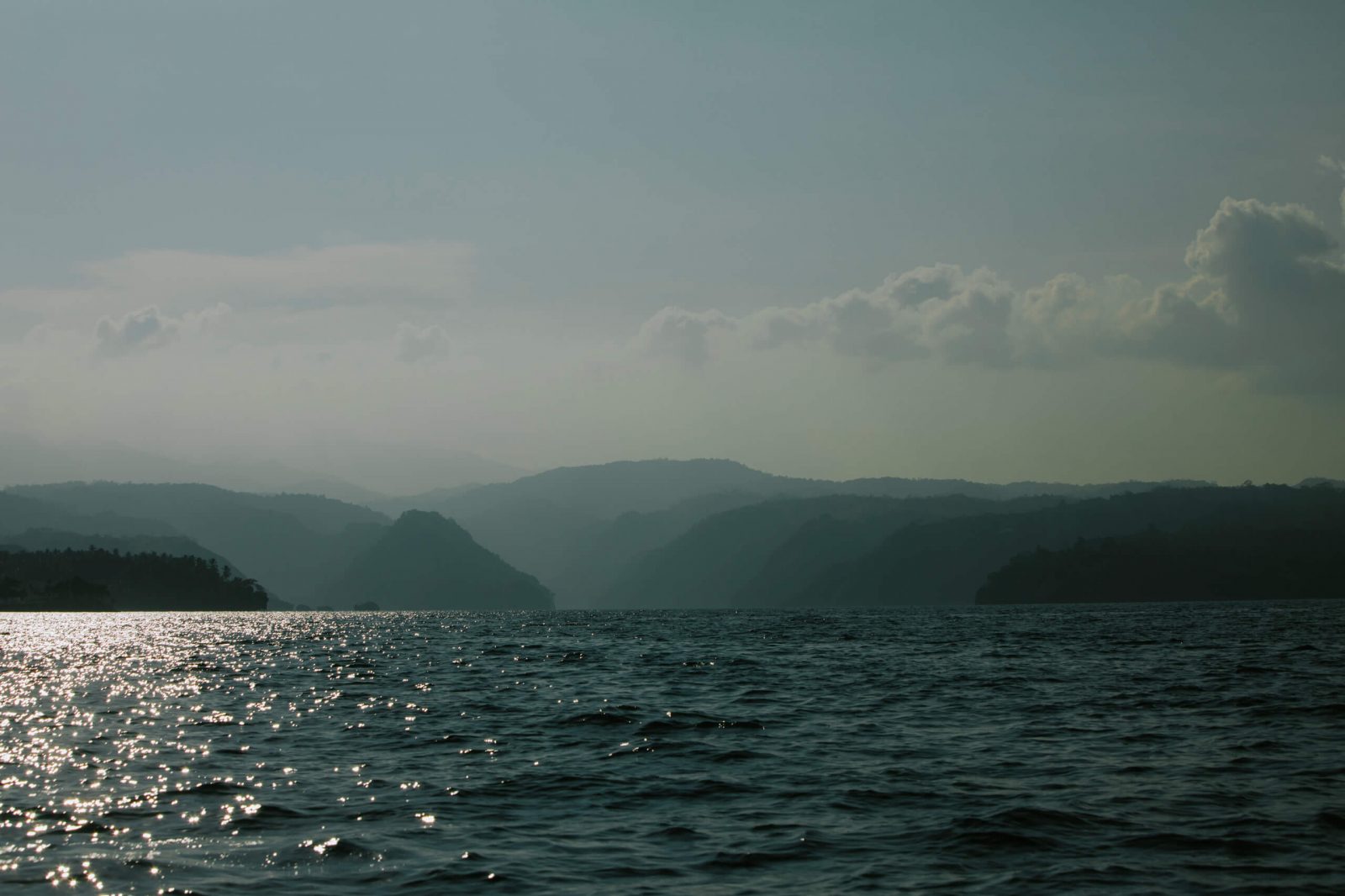
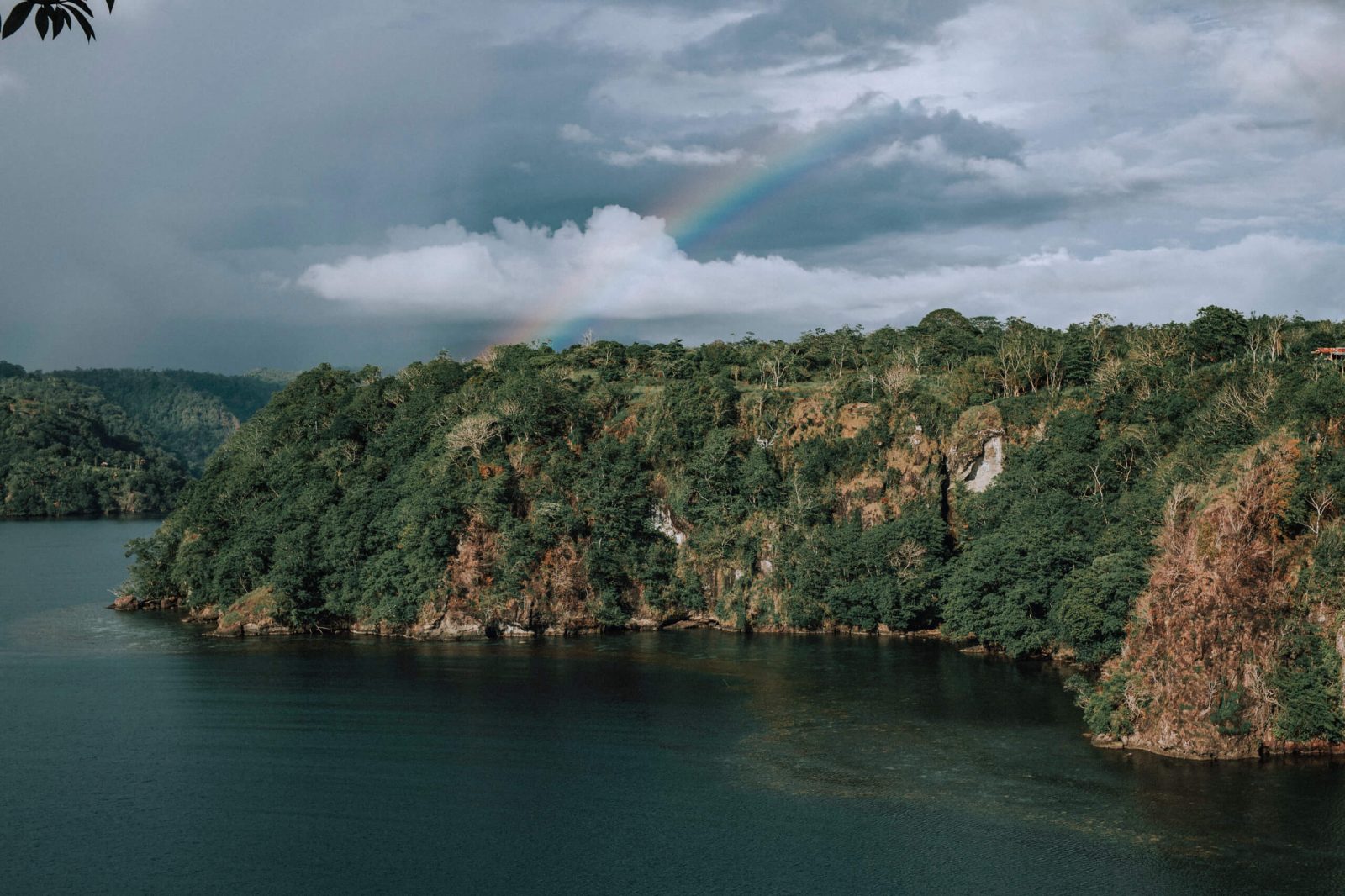
TUFI
Perched on the edge of a cliff our home base looked directly up a lush fjord towards the mountains. The fjord itself was lined with dense rain-forest and where the ocean met the base of the cliff, colourful plates of coral sat just under the waterline.
Dotted throughout the waterway, locals on canoes moved their cargo of freshly caught fish and harvested produce from inlet to cove. The skies were alive with exotic bird-life. Hornbills, Lorikeets, Cockatoos, parrots and fish-hunting raptors. The Black Kites swooped and glided close to the deck, looking to salvage any food left behind by hotel guests, while Brahminy Kites and White Bellied Sea Eagles soared high above the water hoping for a fresher catch.
If you stared long enough down the fjord you would be rewarded by the sight of a long silver projectile breaching the water’s surface and launching through the air. I was later told by Graham, our guide, it was Spanish Mackerel. We added fishing to the afternoon’s agenda.
PORTABLE STUDIO
The first portrait session was set high on a headland in the fjords of Oro Province. The scenery was remarkable and it felt unnatural to be closing off the background with our portable white studio. As we assembled the willing subjects from the nearby village and began our session, it soon became obvious why I had chosen this method. There was so much story to be read on t he faces, bodies and traditional costumes that we were capturing. The isolation created by the white background served to enhance their personal narratives by removing the distraction of surrounds and environment. Any vulnerability or strength of character was exposed, revealing unique personalities with every portrait. For the elderly, their wrinkles where like pages of a book. The younger subjects had a freshness in their eyes, conveying an infectious bewilderment.
The locals were equally curious with our equipment and purpose and so beyond the process of our project our white box became a meeting place, a talking point and an instrument to start a conversation with our new friends. We were all eyes and ears.
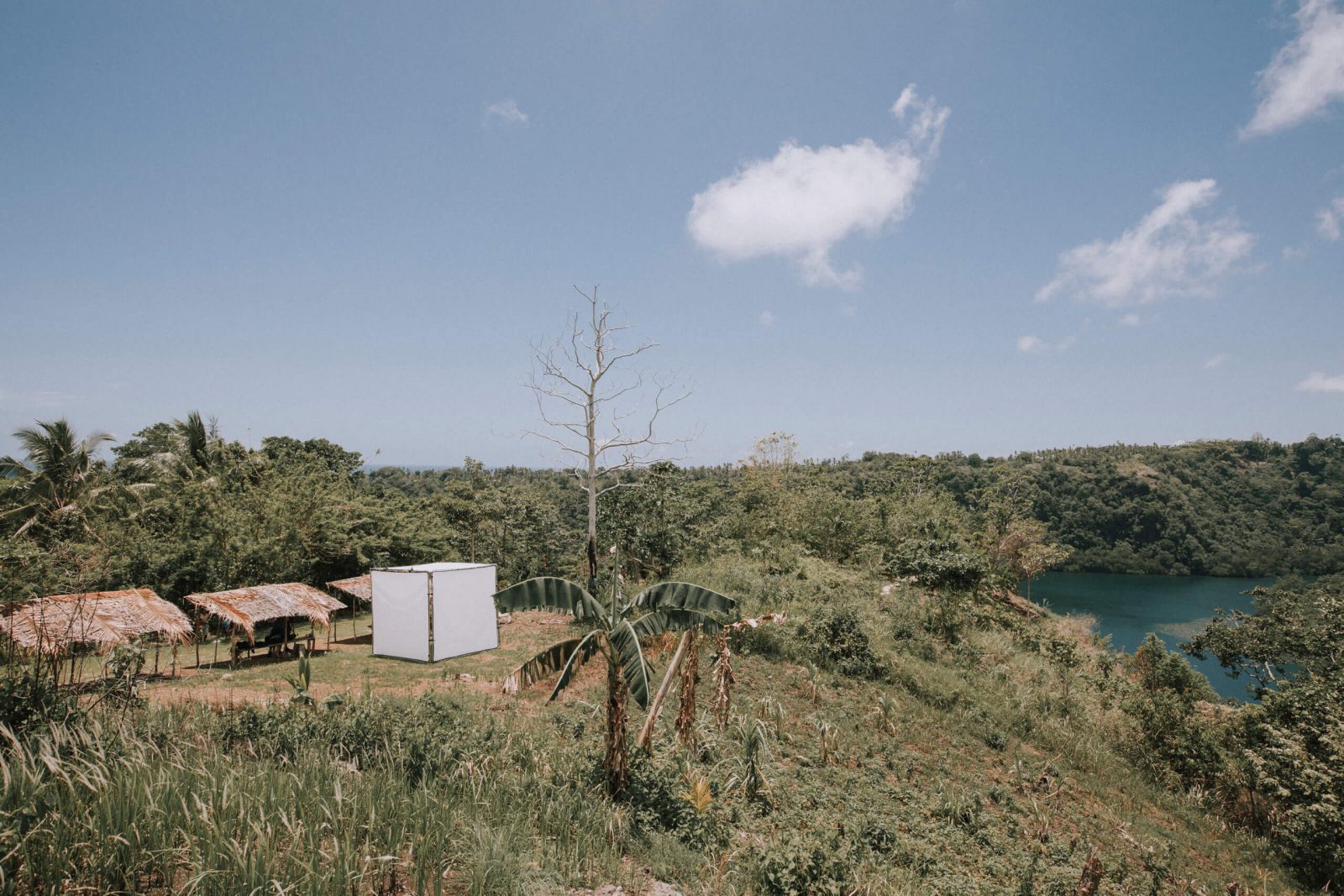
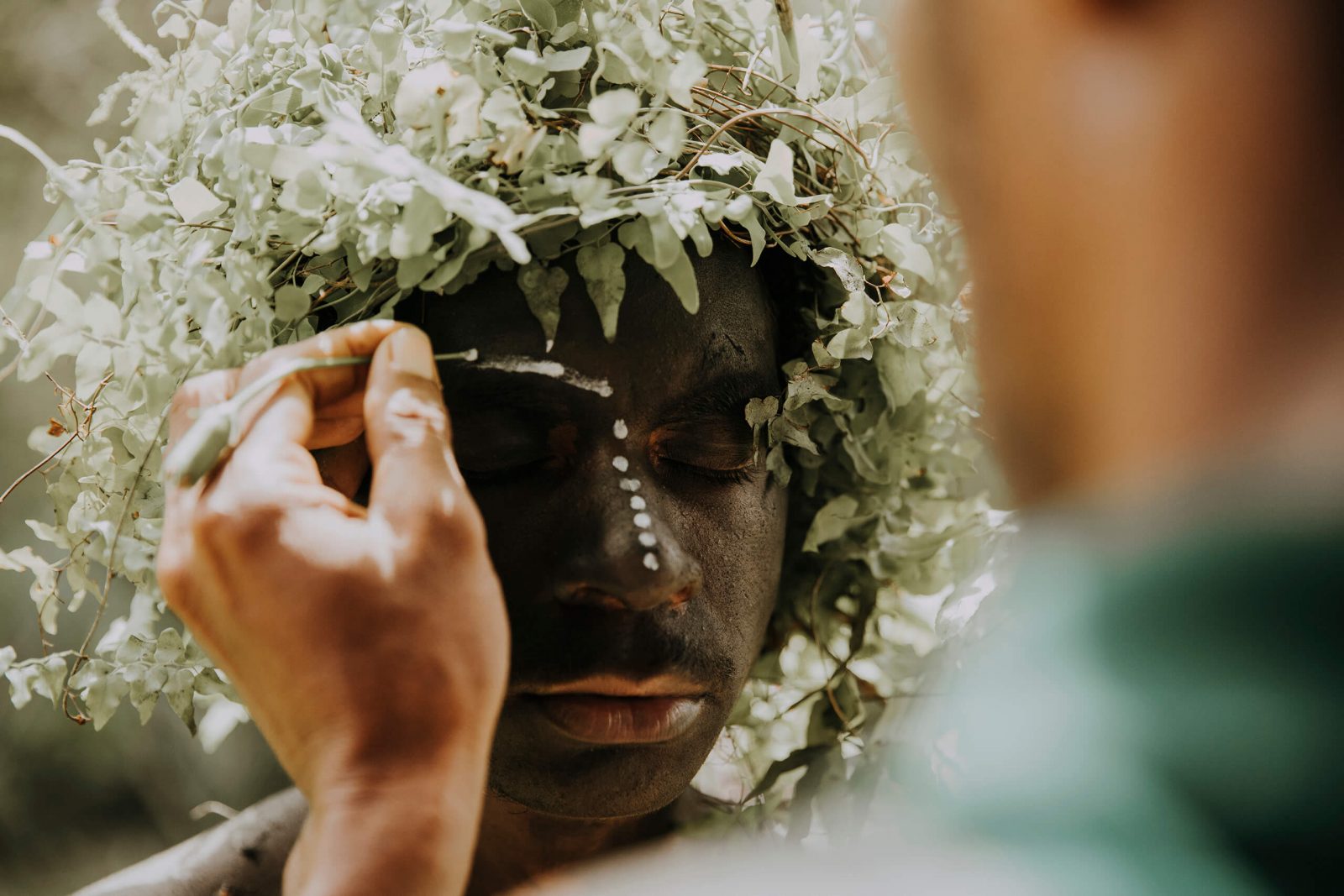
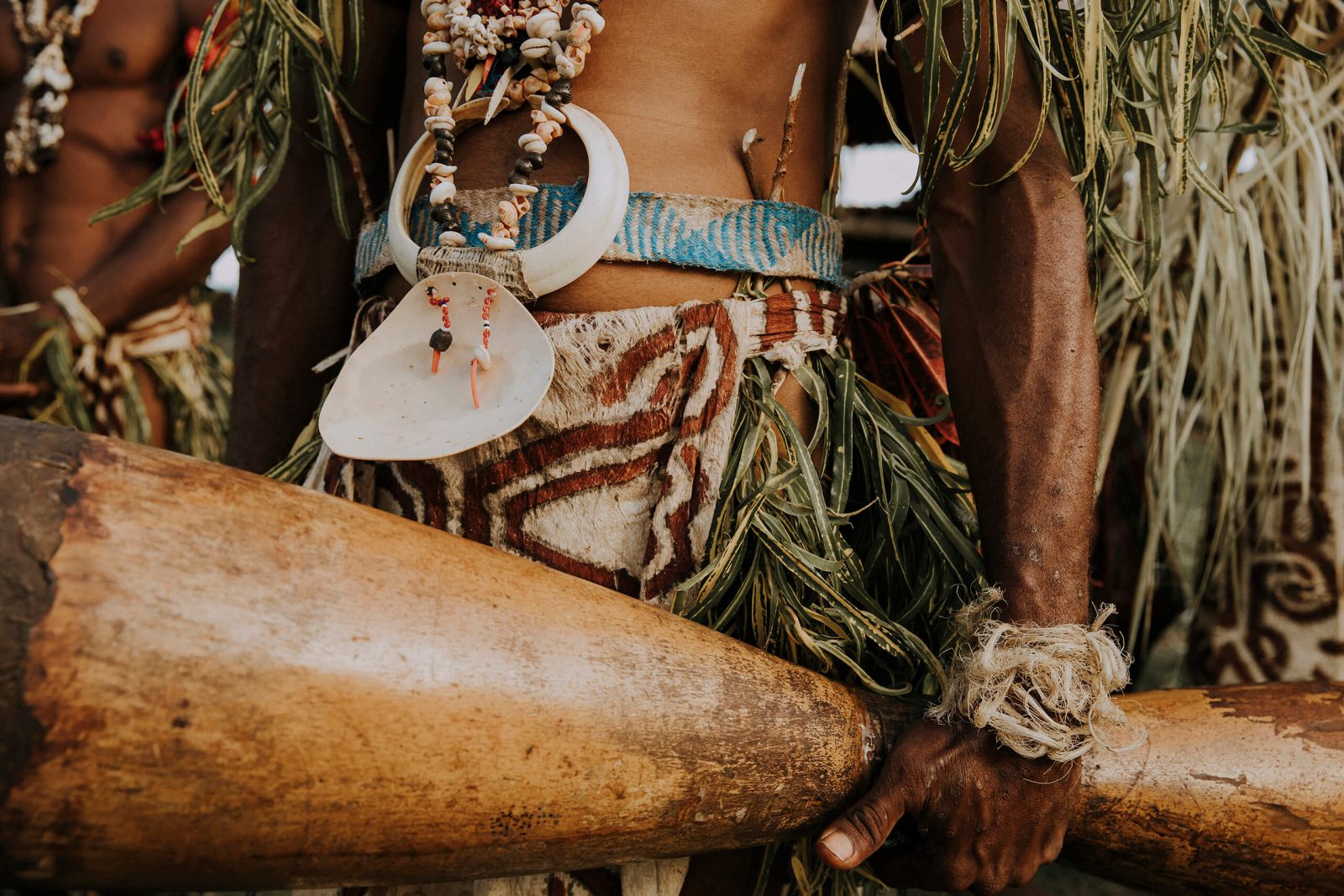
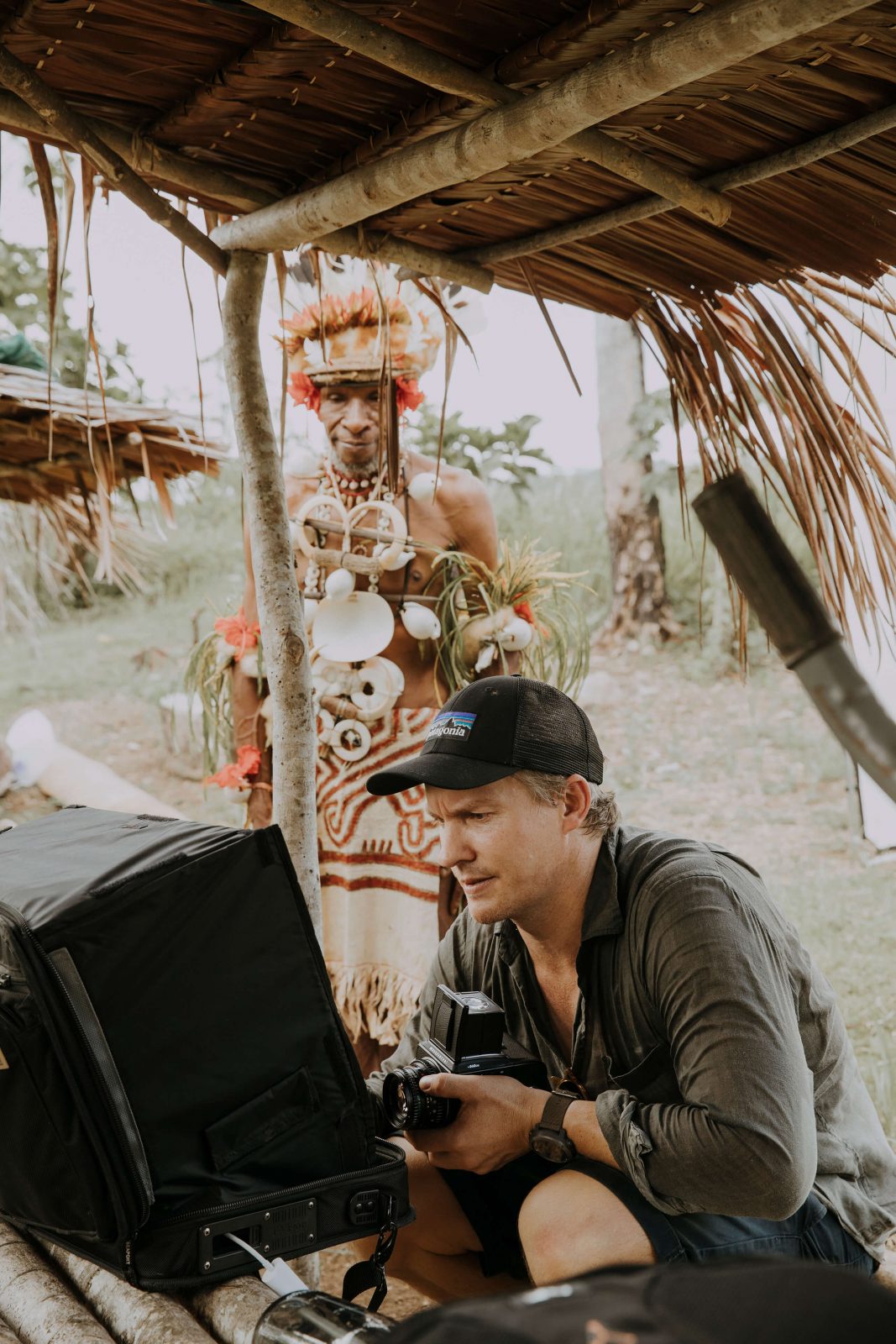
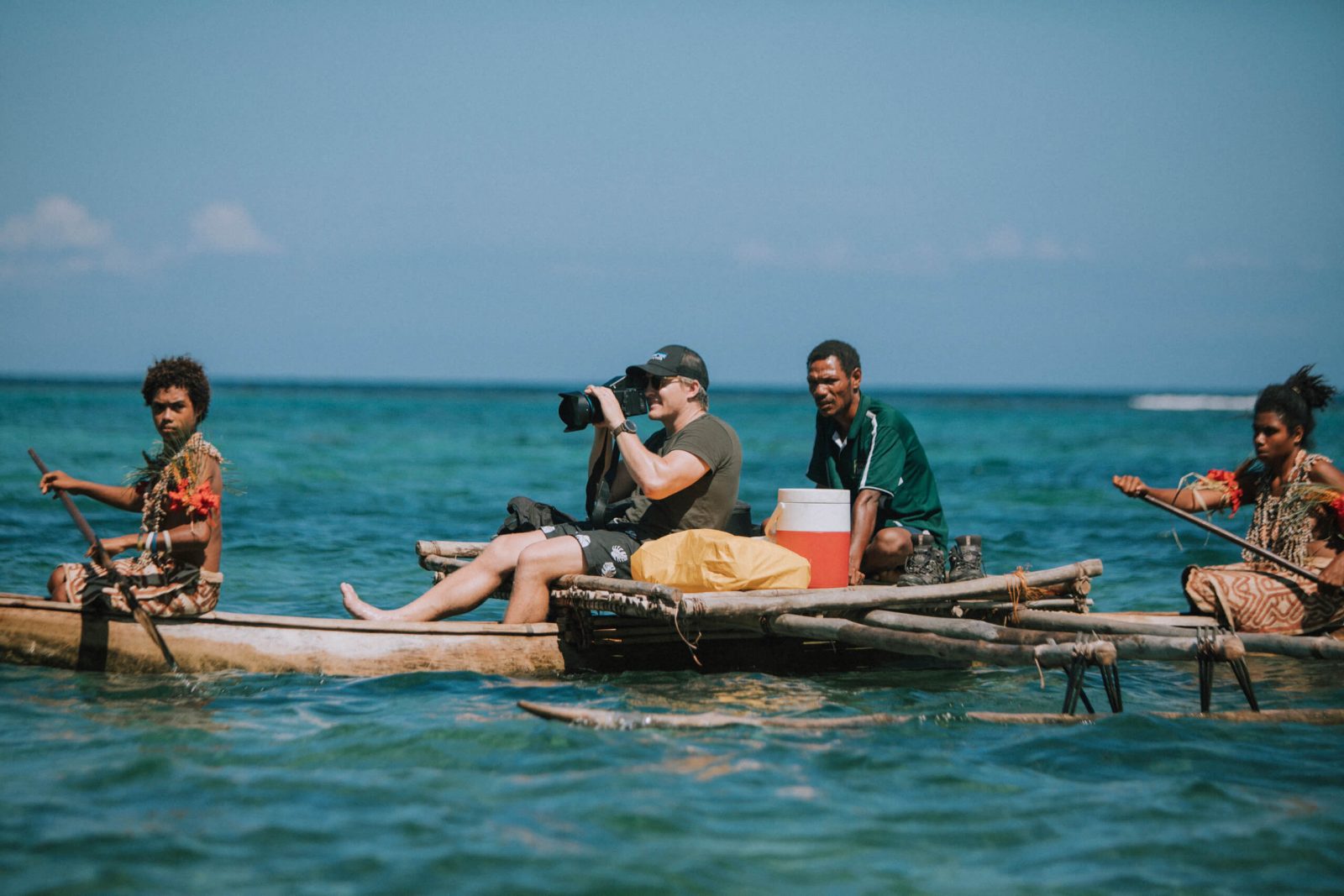
TRANSPORT
Apart from short runs in a troop carrier from our base to the immediate local villages, our main method of transport was either by canoe or hiking. We had five photographic cameras, three video cameras, two large portable studio bags, three tripods and some personal belongings. Seeing all of this floating only inches above the ocean as we paddled along the coast from village to village made for nervous times.
Our portable studio packed into two large waterproof bags weighing 25kg each. They were too cumbersome for one person to carry so we enlisted the help of four young porters from the fishing village to help transport them up to Orotoaba Village. A two-hour hike uphill in the middle of the day. They used a thick piece of bamboo to hang each bag on and in pairs marched up the hill with the bamboo resting on their shoulders, barely breaking a sweat.
With only 15kg of camera gear on our backs in the high humidity and 35-degree scorching heat, our shirts were wringing wet 15 minutes into the trek. Looking around at the grasslands and ahead to the highlands the air was alive with native bird calls, insects and a balmy Pacific breeze that rushed through the vegetation. It was a feast for the senses and a reminder of how far we were from home.
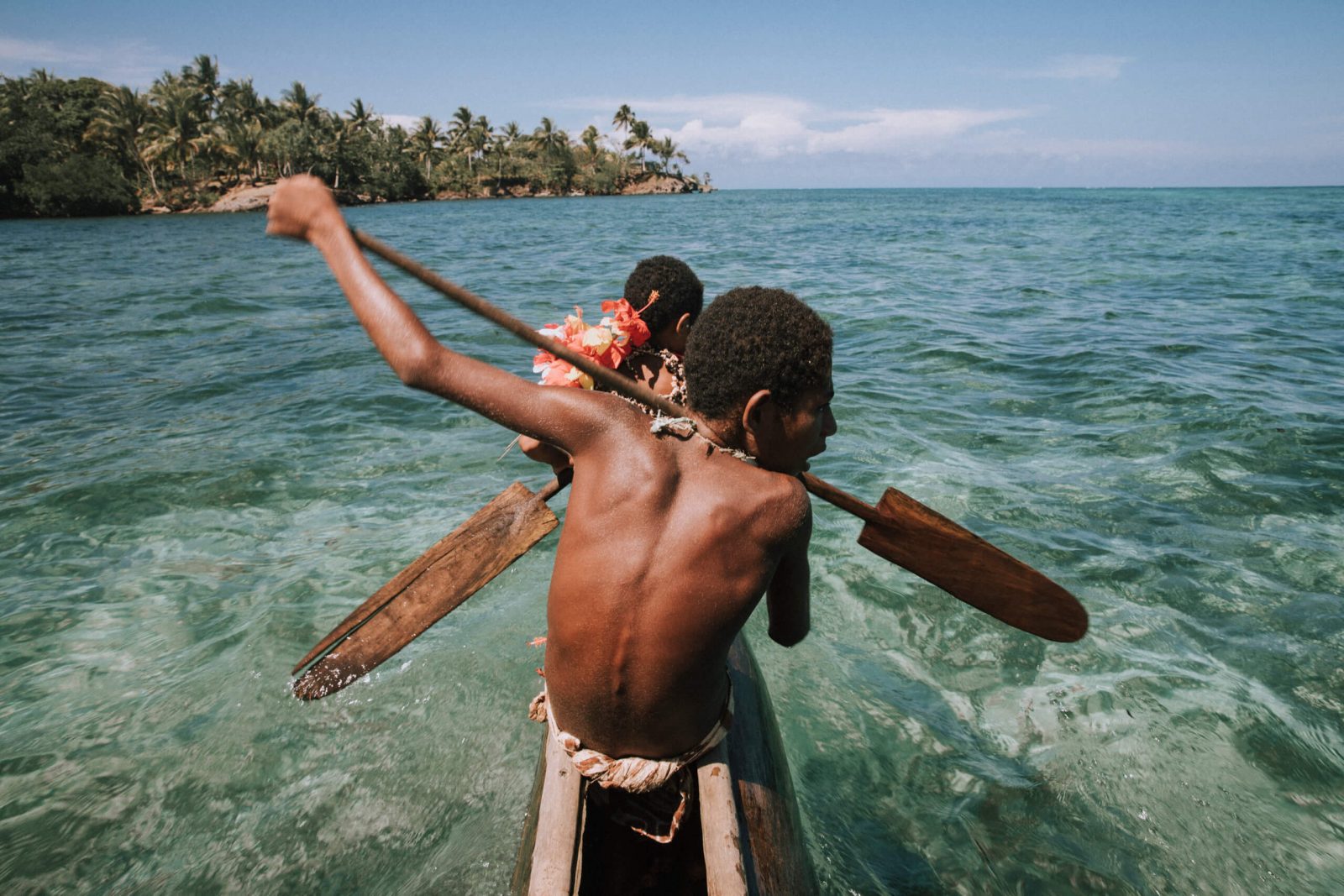
NEGOTIATIONS
Negotiating a fair talent fee was clearly explained by our local guide. For talent featuring their face, it was $50. For talent holding an object and not featuring their face, it was $25. However, the fees to supply props, artefacts, extra help when setting up and packing down, portering bags from village to village or village to canoe, was a little grey. A photo of a freshly carved canoe cost us $20 from the village prop house. A snap of a wild-caught kingfisher, $15. Six men who we thought were just happy to help pack down our portable studio kindly asked for $10 each for their efforts. An older, frailer man who was stretching his physical ability was overly keen to carry one of our backpacks back to our canoe for $15. The negotiations were never awkward and everyone who chipped in was fairly compensated, including a pet cuscus with one blind eye and a rescued, blood-stained cockatoo, $25 each.
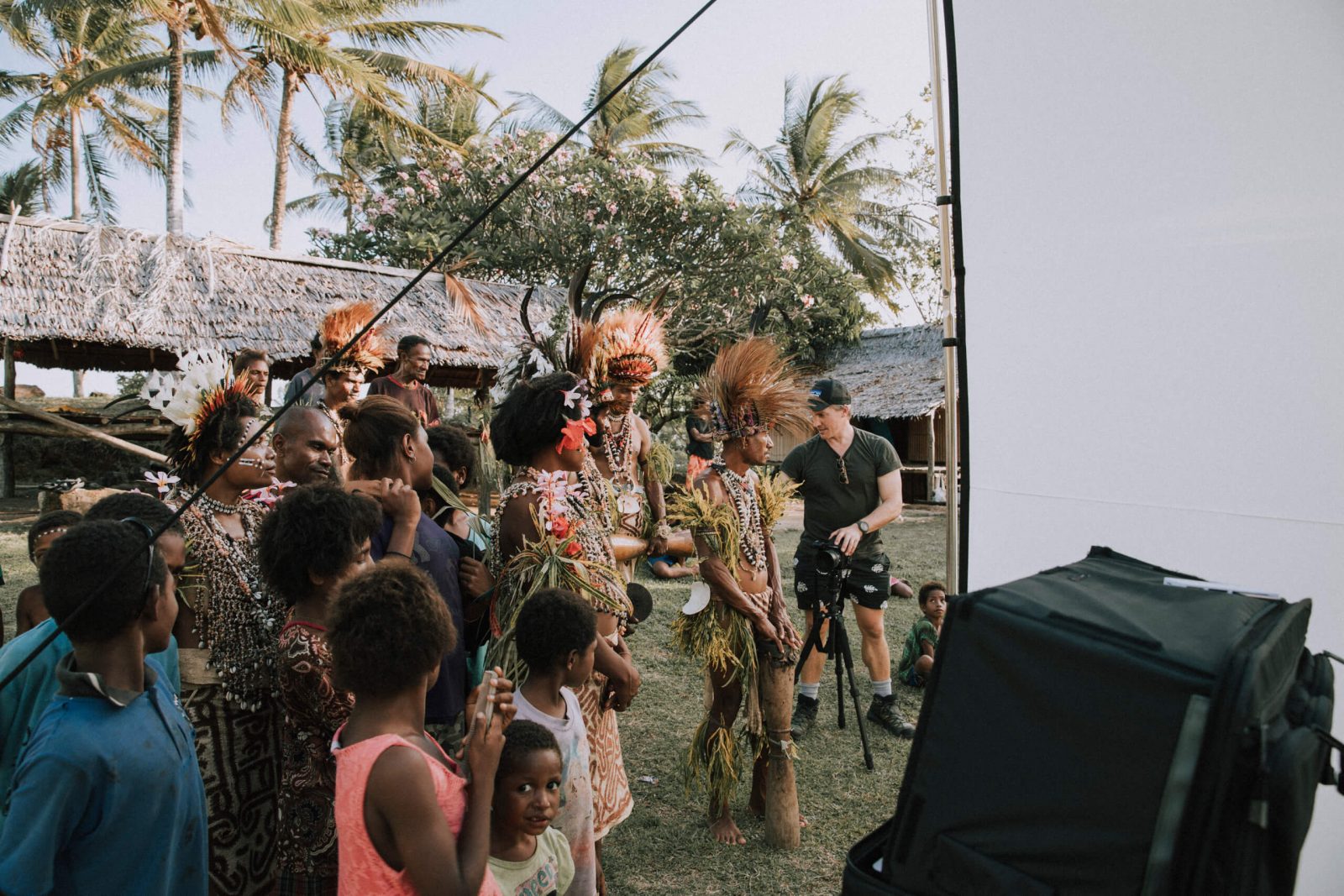
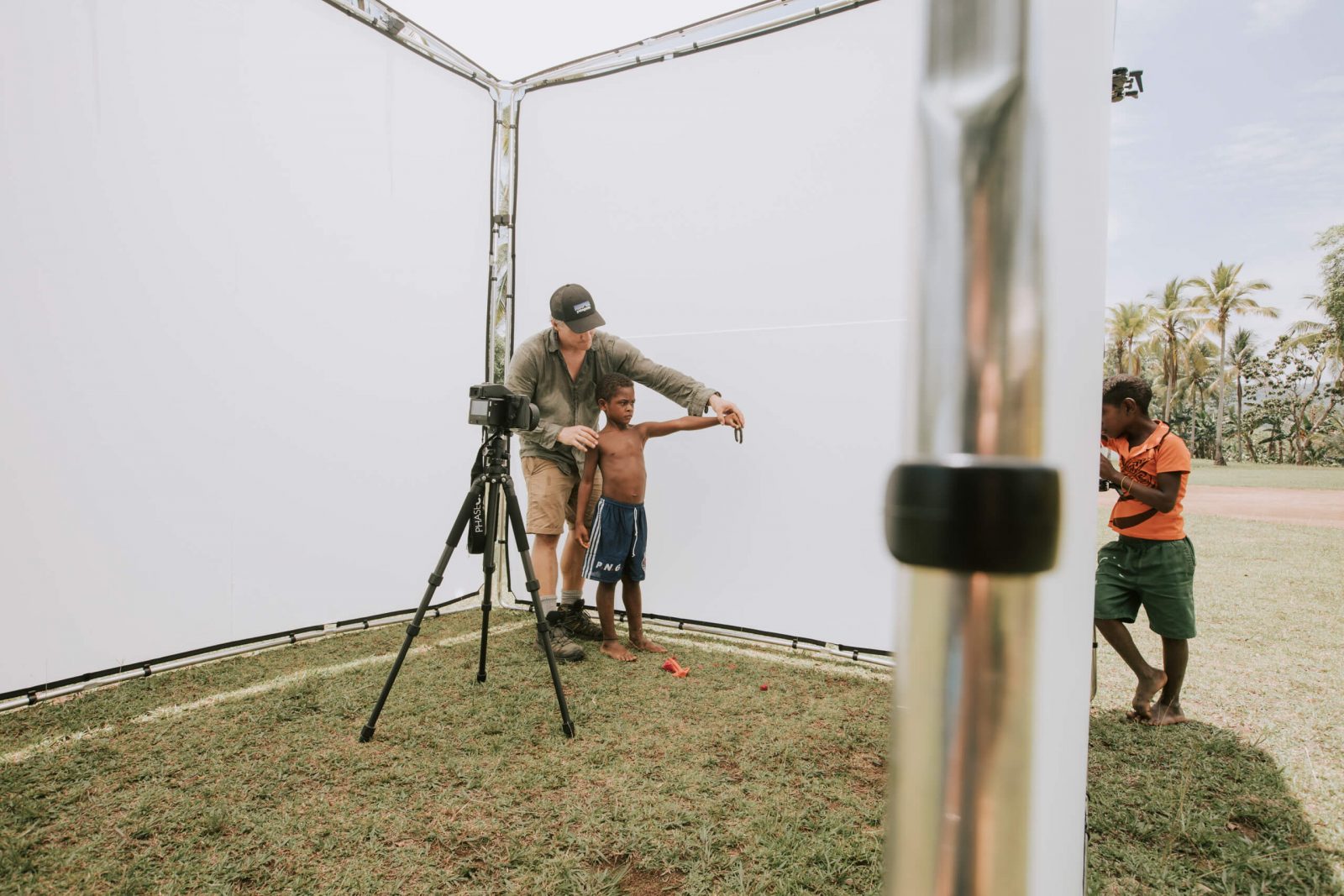
GIANT CENTIPEDE
From our first day to our last, Lesley Jr shadowed the crew to all the villages his parents would allow. Everywhere we turned he was on our heels, offering to carry our gear and observing our every move. I wanted to make his portrait special so when I spotted a giant millipede curled up on the track I gestured to Lesley Jr to collect it as a fitting prop. What little boy doesn’t love giant insects? However, his reaction wasn’t what I expected and he looked back at me with concern. Thinking it was a communication break down I picked it up and showed him the pose I was hoping he would adopt. The arthropod was still warm, but lifeless. Lesley Jr still hesitated, but his eagerness to be part of the production was too much for him to refuse. He carefully took it from me. The fierceness in his eyes in line with the scale of the millipede made for a powerful portrait. He quickly tossed it away and wiped his hands.
Excited about the shot, I showed our guide later that night and he revealed why Lesley Jr was so reluctant to handle it. He explained, the giant millipede excretes a toxic liquid that causes a brownish pigmentation or burn when it comes into contact with the skin. Lesley Jr earned his portrait position at the beginning of the book for his efforts (his father, Lesley Sr, pipped him for the cover).
SUMMARY
On the afternoon of our final day, a village fisherman paddled us offshore in his canoe to teach us how the locals fish. Holding a wooden hand reel rigged with a flattened piece of lead, a small hook and a single chicken feather as a lure, I sat straddling the front of the dugout with my feet in the water and my toes close to the reef below. I looked around. The tame swell lapped and a soft breeze held off the tropical heat.
Basking in the idyllic surrounds I began to reflect on our time in Oro Provence. We had been exposed to so much in such a short space of time.
We met proud women parading their tattooed faces. We shook hands with young men marked with rudimentary tattoos like the charcoal drawings of the Altamira caves in Spain. We noticed their fishing spears resembled ones I had seen in the hands of the indigenous Australians of East Arnhem Land. We witnessed customs both new and old, borrowed and locally manifested.
We stood, eyes closed, with a lizard man who magically summonsed a wild lizard from the jungle, with a ritualised chant. Had we lifted our eyelids before instruction, the spirits would have sent the lizards away.
There were butterflies bigger than birds and a pet kingfisher tethered to a child like a kite.
On the shores sailors stitched together plastic bags to make untraditional sails, while dugout canoes were carved from a hollowed out tree as they had practiced for centuries.
Traditional costumes were crafted and embellished with boar tusks, cuscus fur, feathers, flowers, shells, leaves and grass and kept in pristine condition. Youths wore worn-out modern clothing.
We watched toddlers wielding knives and witch doctors mixing potions. We noticed locals rolling cigarettes in newspaper and women breastfeeding the village pigs.
We were crooned by a Bird-of-Paradise and soothed by the snare-drum rapping of a tropical downpour on our thatched roof. We were deafened by buzzing cicadas and enrgised by tribal dancers.
We observed children with betel nut-stained teeth and cockatoos with blood-stained feathers.
There were villages with timeless architecture and defiant jungles thick with ancient vegetation. But above all else, we saw happiness and harmony from the smallest child to the wisest elder.
Limited edition prints
Editions: 10
Size: 841 x 1189 mm
Stock: Photo Rag Pearl
Enquiries: [email protected]
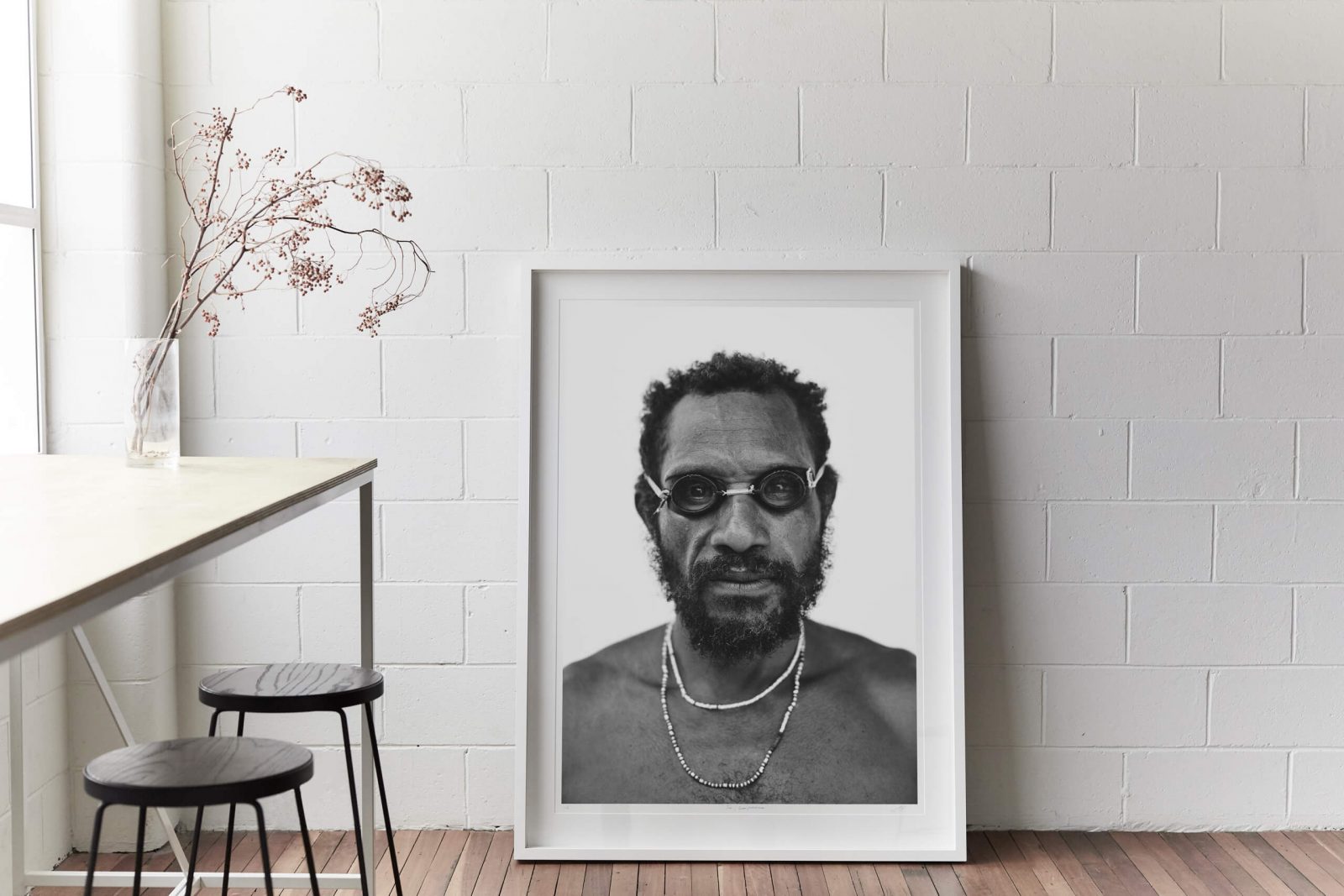
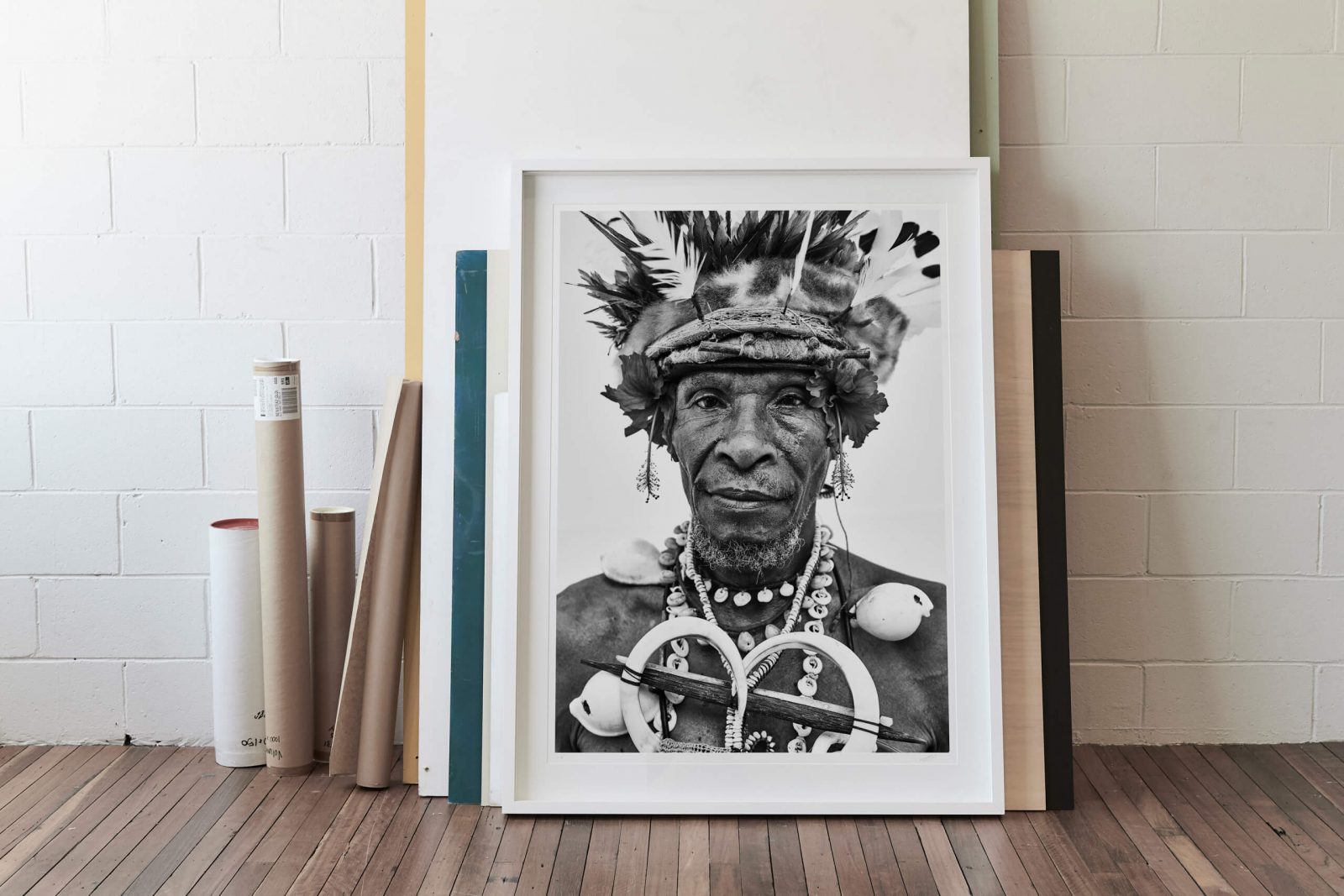
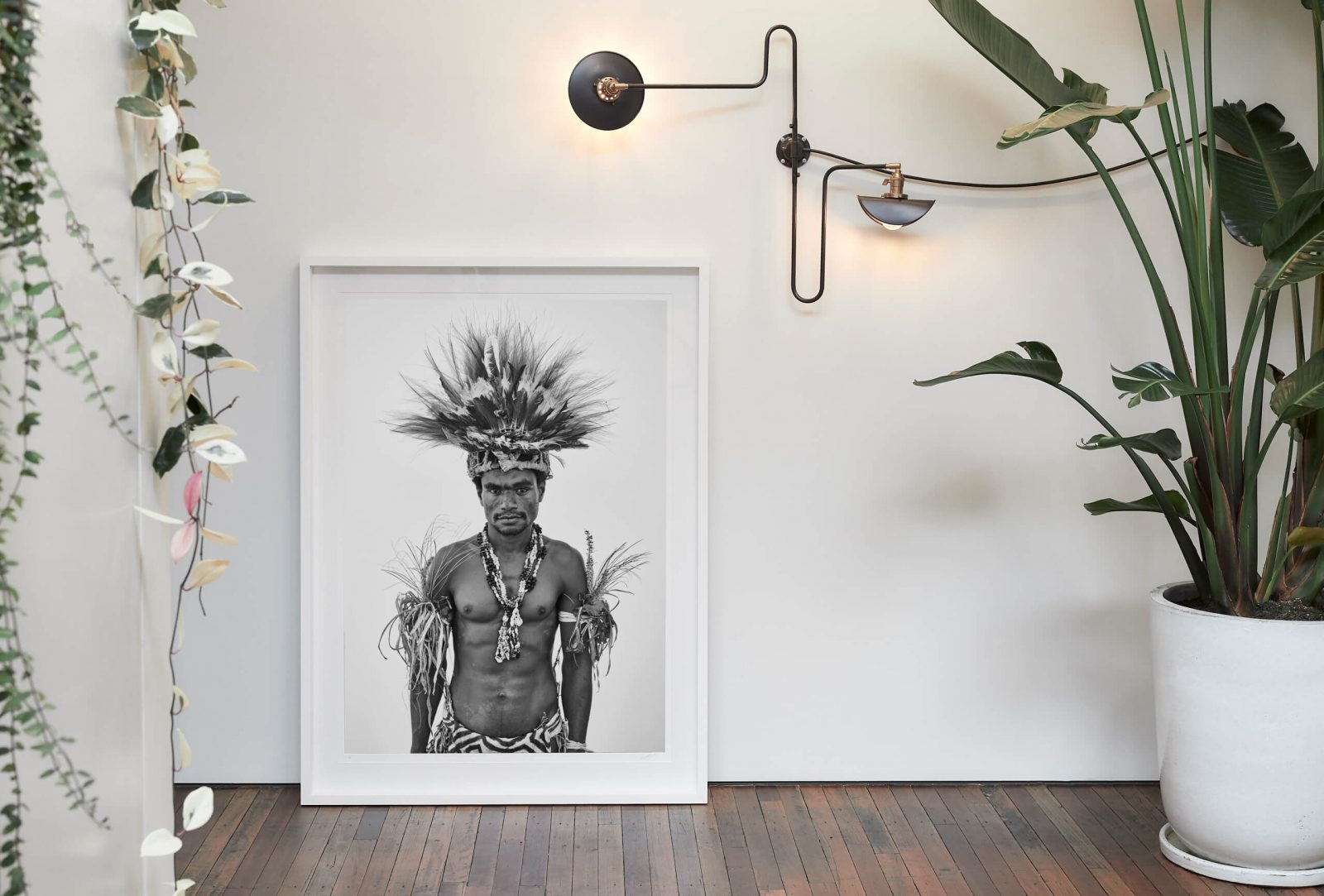
ACKNOWLEDGMENTS
Brian, Roya and Kym Boustridge, Tufi Resort
Graham and all the porters, guides and canoe operators
http://www.tufiresort.com
Cieran Murphy – production assistant & photography
https://www.cieranmurphy.com
Brendan Shambrook – cinematography
http://www.brendanshambrook.com
Stephanie Antill – graphic design
https://www.stclementcreative.com